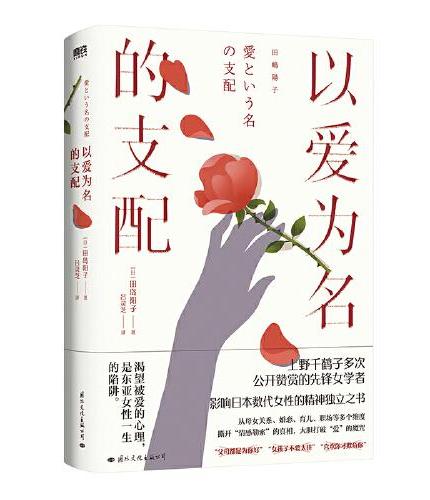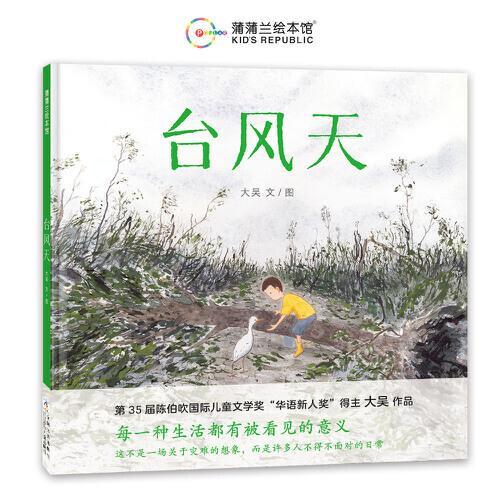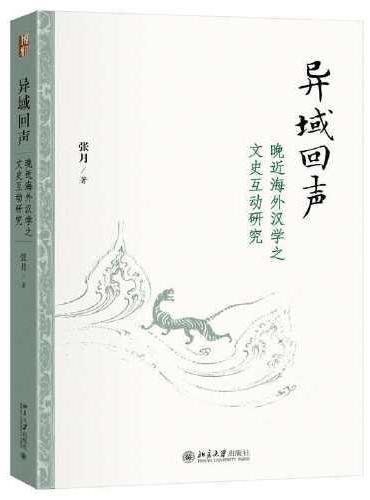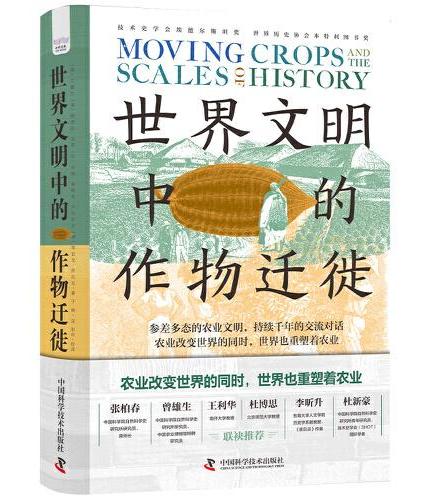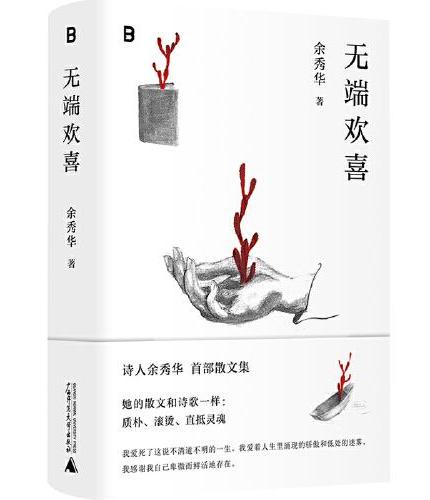Flowery Tuscany
如花的托斯卡纳
North of the Alps, the everlasting winter isinterrupted by summers
that struggle and soonyield; south of the Alps, the everlasting
summer isinterrupted by spasmodic and spiteful winters thatnever
get a real hold, but that are mean and dogged.The in-between, in
either case, is just as it may be.But the lands of the sun are
south of the Alps, forever.
In the morning, the sun shines strong on thehorizontal green
cloud-puffs of the pines, the skyis clear and full of life, the
water runs hastily, stillbrowned by the last juice of crushed
olives. Andthere the earth’s bowl of crocuses is amazing. Youcannot
believe that the flowers are really still. Theyare open with such
delight, and their pistil is so red-orange,and they are so many,
all reaching out wideand marvelous, that it suggests a perfect
ecstasyof radiant, thronging movement, lit-up violet andorange, and
surging in some invisible rhythm ofconcerted, delightful moverment.
You cannot believethey do not move, and make some sort of
crystallinesound of delight. If you sit still and watch, you
beginto move with them, like moving with the stars, andyou feel the
sound of their radiance. All the little cellsof the flowers must be
leaping with flowery life andutterance.
And now that it is March, there is a rush offlowers. Down by the
other stream, which turnssideways to the sun, and tangles the brier
andbramble, down where the hellebore has stood so wanand dignified
all winter, there are now white tuftsof primroses, suddenly come.
Among the tangle andnear the water-lip, tufts and bunches of
primroses,in abundance. Yet they look more wan, more pallid,more
flimsy than English primroses. They lacksome of the full wonder of
the northern flowers. Onetends to overlook them, to turn to the
great, solemn-facedpurple violets that rear up from the bank,
andabove all, to the wonderful little towers of the
grapehyacinth.
This is the time, in March, when the sloe is whiteand misty in the
hedge-tangle by the stream, andon the slope of land the peach tree
stands pink andalone. The almond blossom, silvery pink, is
passing,but the peach, deep-toned, bluey, not at all ethereal,this
reveals itself like flesh, and the trees are likeisolated
individuals, the peach and the apricot. It isso conspicuous and so
individual, that pink amongthe coming green of spring, because the
first flowersthat emerge from winter seem always white or yellowor
purple. Now the celandines are out, and along theedges of the
podere, the big, sturdy, black-purpleanemones, with black
hearts.
The daisies are out too, in sheets, and they toored-mouthed. The
first ones are big and handsome.But as March goes on, they dwindle
to bright littlethings, like tiny buttons, clouds of them
together.That means summer is nearly here.
In some places there are old yellow tulips,slender and spiky. They
are very lovely, pricking outtheir dulled yellow in slim spikes.
But they too soonlean, expand beyond themselves, and are gone
likean illusion. And when the tulips are gone, there is amoment’s
pause, before summer. Summer is the nextmove.
In the pause towards the end of April, when thef lowers seem to
hesitate, the leaves make up theirminds to come out. For sometime,
at the very endsof the bare boughs of fig trees, spurts of pure
greenhave been burning like little cloven tongues of greenfire
vivid on the tips of the candelabrum. Now thesespurts of green
spread out, and begin to take theshape of hands, feeling for the
air of summer. Andtiny green figs are below them, like glands on
thethroat of a goat.
Now the aspens on the hill are all remarkablewith the translucent
membranes of blood-veinedleaves. They are gold-brown, but not like
autumn,rather like thin-winged bats when like birds—callthem
birds—they wheel in clouds against the settingsun, and the sun
glows through the stretchedmembrane of their wings, as through
thin, brown-redstained glass. This is the red sap of summer, not
thered dust of autumn.
The cherry tree is something the same, but moresturdy. Now, in the
last week of April, the cherryblossom is still white, but waning
and passing away:it is late this year, and the leaves are
clustering thickand softly copper in their dark blood-filled glow.
It isqueer about fruit trees in this district. The pear andthe
peach were out together. But now the pear tree isa lovely thick
softness of new and glossy green, vividwith a tender fullness of
apple-green leaves, gleamingamong all the other green of the
landscape, the half-highwheat, emerald, and the grey olive,
half-invisible,the browning green of the dark cypress, the black
ofthe evergreen oak, the rolling of the heavy green puffsof the
stone-pines, the flimsy green of small peachand almond trees, the
sturdy young green of horse-chestnut.So many greens, all in flakes
and shelvesand tilted tables and round shoulders and plumesand
shags and uprisen bushes, of greens and greens,sometimes blindingly
brilliant at evening, when thelandscape looks as if it were on fire
from inside, withgreenness and with gold.
In the wood, the scrub-oak is only just cominguncrumpled, and the
pines keep their hold on winter.They are wintry things,
stone-pines. At Christmas,their heavy green clouds are richly
beautiful. Whenthe cypresses rise their tall and naked bodies of
darkgreen, and the osiers are vivid red-orange, on the stillblue
air, and the land is lavender; then, in mid-winter,the landscape is
most beautiful in colour, surgingwith colour.
Not that this week is flowerless. But the flowersare a little
lonely things, here and there: the earlypurple orchid, ruddy and
very much alive, you comeacross occasionally, then the little
groups of bee-orchids,with their ragged concerted indifference
totheir appearance. Also there are the huge bud-spikesof the stout,
thick-flowering pink orchid, huge budslike fat ears of wheat,
hard-purple, and splendid. Butalready odd grains of the wheat-ear
are open, and outof the purple hangs the delicate pink rag of
floweret.Also there are very lovely and choice
cream-colouredorchids with brown spots on the long and delicate
lip.These grow in the more moist places, and have exotictender
spikes, very rare-seeming. Another orchid is alittle pretty yellow
one.
By May, the nightingale will sing an unbrokensong, and the discreet
barely audible Tuscan cuckoowill be a little more audible. Then the
lovely pale-lilacirises will come out in all their showering
abundanceof tender, proud, spiky bloom, till the air will gleamwith
mauve, and a new crystalline lightness will beeverywhere. There
will be tufts of iris everywhere,arising up proud and tender. When
the rose-colouredwild gladiolus is mingled in the corn, and the
love-in-a-mist opens blue: in May and June, before the cornis cut.
But as yet is neither May nor June, but the endof April, the pause
between spring and summer, thenightingale singing uninterrupted,
the bean-flowersdying in the bean-fields, the bean-perfume
passingwith spring, the little birds hatching in the nests,the
olives pruned, and the vines, the last bit of lateploughing
finished, and not much work to hand, now,not until the peas are
ready to pick, in another twoweeks or so.
So the change, the endless and rapid change. Inthe sunny countries,
the change seems more vivid,and more complete than in the grey
countries. In thegrey countries, there is a grey or dark
permanency,over whose surface passes change ephemeral, leavingno
real mark.
But in the sunny countries, change is thereality and permanence is
artificial and a conditionof imprisonment. Hence, to the
northerner, thephenomenal world is essentially tragical, because it
istemporal and must cease to exist. Its very existenceimplies
ceasing to exist, and this is the root of thefeeling of tragedy.
But to the southerner, the sun isso dominant that shadow, or dark,
is only merelyrelative: merely the result of something
gettingbetween one and the sun.
In the human race, the one thing that is alwaysthere is the shining
sun, and dark shadow is anaccident of intervention. For my part, if
the sunalways shines, and always will shine, in spite ofmillions of
clouds of words. In the sunshine, evendeath is sunny. And there is
no end to the sunshine.
That is why the rapid change of the Tuscanspring is utterly free,
for me, of any senses of tragedy.The sun always shines. It is our
fault if we don’t thinkso.
spasmodic adj. 间歇的
ecstasy n. 狂喜
dwindle v. 缩小
ephemeral adj. 短暂的
阿尔卑斯山的北麓,漫长的冬天会偶尔被夏季打断,但夏天只挣扎片刻就屈服了;而在南麓,夏天会被一阵阵寒冬恶意打扰,但即使讨厌地纠缠,冬天也永远无法真正占了上风。在两者之间,任何情况都可能发生。但是阳光普照的地方永远都是阿尔卑斯山南麓。
清晨,强烈的阳光照在树枝平展如绿云般的松林上,天空晴朗,充满生机,流水匆匆,还带着破碎橄榄的汁水染出的棕色。遍地的番红花让人惊叹。你无法相信这些花真的是静止的。它们如此欢快地绽放,雌蕊是鲜亮的橙红色。它们有那么多,都在热烈地怒放,美得不可思议,挨挨挤挤地放出喜悦的光彩,仿佛翩翩起舞,一片明亮的紫色和橙色,和着无形的美妙节奏欢快地摆动。你无法不相信它们在动,而且发出了水晶般欢快的声音。如果你坐下静静欣赏,就会不由自主地随它们起舞,就像追随星星一样。你还会听到它们欢快的声音。花朵的每一个小细胞都跳跃着绚丽的生命和言语。
正是三月,百花盛开。在另一条朝太阳方向流动的溪边,野蔷薇和荆棘交错,藜芦苍白而不屈地挺过了冬天,现在一蓬蓬白色的报春花也出其不意地冒了出来。丛丛的报春花占满了杂乱的灌木丛和溪水的拐弯。可它们比英格兰的报春花更苍白,也单薄许多。它们不像北方的花朵那样夺目。人们往往会忽略它们,被河岸边挺拔端庄的紫罗兰吸引,或者更愿意欣赏风信子漂亮的小花塔。
三月,刚好是溪边灌木丛中白色的野李花如烟如雾,山坡上粉红的桃树孑然独立的时节。银粉色的杏花已渐渐飘零,桃树却顶着浓艳的花冠,一点儿也不飘逸,却是本来面目,而桃树与杏树就像毫不相干的两种人。绿色的春天里,桃花的粉色个性鲜明,十分醒目。因为冬天过后,早春的花常常是白色、黄色或紫色的。白屈菜也冒出头来了。在湖边还有高大强壮、黑色花蕊的紫黑色银莲花。
雏菊也开了大片大片的,像娇艳的红唇。开始的花长得又大又漂亮。可是三月将尽,它们就变成了颜色鲜艳的小花,小纽扣似的,云一样凑成一堆。这说明夏天要到了。
一些地方长着修长的、有着尖尖花瓣的黄色郁金香。它们很漂亮,细长的花瓣呈现一种暗黄色。不过,花瓣很快就会散得太开,盛极而衰,仿佛幻影一样消失无踪。郁金香开过后,初夏来临前,花儿们会暂时偃旗息鼓。之后就是夏天了。
沉寂的四月底,花朵似乎在犹豫,叶子却下定决心一股脑地跑了出来。一时间,纯净的绿芽在无花果的枝梢冒出,好像烛台顶上跳跃的绿色小火舌。如今,绿芽展开,变成小手的形状,触摸着夏天的气息。小小的绿色无花果藏在叶片下面,像山羊喉咙下面的腺体。
现在,山坡上杨树的叶子像一层半透明的膜,上面叶脉分明,格外引人注目。叶子是金棕色的,但与秋天时不同,像是薄翼的蝙蝠如鸟儿一般——我们暂时就叫它们鸟吧——映着落日的余晖在云中飞翔,阳光射过薄翼,仿佛透过薄薄的棕红色玻璃。这是夏天充满活力的树汁,而不是秋天红色的尘埃。
樱桃树和杨树相似,只是更加强壮。现在已是四月最后一周,白色的樱桃花还在,但正渐渐飘零。今年的时节晚了,茂密的浅棕色叶子红得发亮。这里的果树有些奇怪,梨花和桃花会一起开放。现在梨树被柔和光亮的新绿密密包裹,漂亮可人,苹果绿的叶子鲜嫩饱满,生机勃勃,在一片绿色的风景中格外出挑,此外,这里还有青青的麦苗,不起眼的灰绿色橄榄树,棕绿色的柏树,墨绿的常绿槠,一团团浓绿的石松,嫩绿的小桃树和杏树,翠绿的七叶树。这么多绿色,一片片,一层层,或如斜面,或如浑圆的肩膀,又或片片羽毛,有矮树丛,也有挺拔的灌木,郁郁葱葱。有时傍晚望去,那一片绿色和金色仿佛从内里燃烧起来,光彩夺目。
树林里的胭脂栎和松树挺过了冬天。石松是冬天应景的植物。圣诞节的时候,它们茂密的深绿色树冠浓郁而美丽。当柏树高大的墨绿色枝杆裸露出来,柳树鲜艳的橙红色枝条映衬着沉静的蓝天,大地染上淡紫色,那正是隆冬时节,大地色彩缤纷,美不胜收。
这一个星期花并没有销声匿迹,只不过零星散落在各处。你会在不经意间看到强壮红门兰,红艳艳的充满活力;小丛的蜂兰,有点儿散漫,对外表毫不在意。还有顶着细长大花苞穗的强壮的粉红兰花,那巨大的紫色花苞穗好像饱满的麦穗,漂亮极了,穗上已经开了零星的花,在紫色中点缀着精巧的粉色小花。还有那些非常精致可爱的米色兰花,它们的细长花瓣上有些棕色的斑点。这些兰花喜欢在较潮湿的地方生长,有富于异域风情的柔嫩花穗,看起来十分罕见。还有一种兰花开的是漂亮的黄色小花。
到了五月,夜莺就开始不停地歌唱,平日小心低唱的托斯卡纳杜鹃也会提高声音。接着,美丽的淡紫色鸢尾大片盛开,尖瓣的花朵柔嫩而骄傲,空气都被晕染成一片紫红,清透明快的氛围四处弥漫。鸢尾将遍地开放,柔嫩的花朵骄傲地昂起。五六月,谷物还没收割的时候,玫瑰色的剑兰和开蓝花的黑种草会混迹田中。但现在五六月还没到,只是四月末,春夏之交的间歇,夜莺不停地歌唱;地里的豆花正在凋谢;豆花的香气正随着春天一起消失;小鸟在巢里破壳;橄榄已被修剪;葡萄园已完成最后一遍耕作;还要两个星期左右豌豆才成熟,现在没有多少活儿要做。
变化就这样发生,迅速而没有尽头。阳光照耀的地方比背阴的地方变化更明显,更彻底。在没有阳光的地方是永久的灰色和阴暗,表面的变化一瞬即逝,了无痕迹。
然而,在阳光充足的地方,变化才是真实存在的,永恒不过人为,是一种囚禁。因此,北方人认为,自然世界本质上是个悲剧,因为它只是短暂生存,注定消逝。它的存在本身就意味着终结,这就是悲剧感的根源。而对南方人来说,阳光才是决定性的,阴影或黑暗不过是相关的产物——只是太阳偶尔被遮挡的结果。
对于人类来说,发光的太阳是永恒的,暗影不过是意外的干扰。而在我看来,千言万语都是浮云,既然太阳一直照耀,就会永远照耀下去。在阳光下,即便死亡也是充满阳光的。阳光没有终点。
因此,尽管托斯卡纳的春天飞快地流逝,而我却没有感到一丝的悲伤。太阳永远在照耀。若妄自伤春也是我们的错。
|


